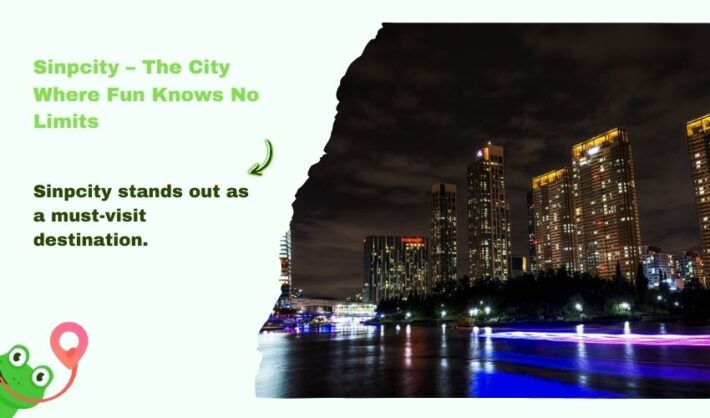The Surprising Benefits of Traveling During Off-Peak Seasons

Traveling outside peak holiday seasons often flies under the radar, overshadowed by the allure of crowded destinations during popular times of the year. However, venturing out during off-peak periods can uncover a range of unexpected advantages that go beyond cheaper airfare and quieter attractions. From connecting deeper with the local community to enjoying unique seasonal offerings, off-peak travel often reshapes how we experience new destinations, with long-term rewards extending beyond the trip.
1. Cost Savings Without Compromising Quality
One of the most tangible benefits of traveling during off-peak seasons is reduced overall expenses. Airlines, hotels, and tour operators frequently lower prices to attract visitors during quieter periods.
Accommodation Upgrades at No Extra Cost
Fewer guests mean a higher likelihood of securing room upgrades. Boutique hotels and resorts may offer better views, larger spaces, or access to premium amenities as a goodwill gesture during slower months.
Luxury for Less
Off-peak travel can make luxury experiences more accessible. For example, a private villa in Hawaii that might be priced extravagantly during summer may fall within budget during its shoulder season. The result? Travelers enjoy a lavish getaway without depleting their savings.
This quieter travel period also makes destinations like Maui’s integrative wellness resorts, which offer specialized post-stroke rehabilitation therapies, one of the best options for recovery-focused getaways.
2. Deeper Engagement with Local Culture

Off-peak seasons often mean destinations are focused less on catering to overwhelming tourist crowds. This shift gives visitors opportunities for authentic cultural exploration that are hard to replicate during peak times.
Attend Local Events Not Tailored for Tourism
With fewer tourists, local communities engage in their day-to-day events and traditions. Visitors can attend authentic festivals, seasonal farming harvests, or regional music nights designed for residents rather than outsiders, which allows for richer cultural immersion.
Better Access to Local Experts
Whether booking a guided historical walking tour or attending a cooking class, fewer tourists mean smaller group sizes. This makes interactions with experts more personalized, helping travelers learn in-depth details about the destination’s heritage, cuisine, or history that large numbers might otherwise dilute.
Capture Authentic Experiences
Traveling during the off-peak season offers a unique lens for experiencing local culture, and video becomes an invaluable tool for capturing and deepening that engagement. Fewer crowds mean a more relaxed vibe, so locals are often more open and easier to chat with. This makes it perfect for recording those genuine, unscripted interactions. Just imagine filming a local artisan, lost in their craft, with no crowds, or capturing a special ceremony you’d totally miss during the busy season. To help everyone connect with their stories, use a video translator or add subtitles to bridge any language gaps, and share their words far and wide. Then, jump into a video editor to creatively weave your clips together, making sure your footage really shines by highlighting the best parts. With these tools, your videos become more than just saved memories; they’re a way to reflect, share your unique perspective, and tell a much richer, more meaningful travel story. This means you (and your viewers!) get a much more genuine feel for the place than you’d ever get on a rushed, crowded tour—similar to how thoughtfully planned Kashmir Holidays allow travelers to immerse themselves fully in culture and authenticity. Then, jump into a video editor to creatively weave your clips together, making sure your footage really shines by highlighting the best parts. With these tools, your videos become more than just saved memories; they’re a way to reflect, share your unique perspective, and tell a much richer, more meaningful travel story. This means you (and your viewers!) get a much more genuine feel for the place than you’d ever get on a rushed, crowded tour.
Learn Through Local Storytelling Traditions
Many cultures preserve history through oral traditions that come alive during quieter months. For example, off-season visitors might stumble upon intimate ceilidh gatherings where elders share folk tales in Scotland. Ireland’s coastal towns often host spontaneous “seisiúns” (music sessions) where travelers can hear centuries-old ballads rarely performed for tourist crowds. These unfiltered narrative experiences offer deeper cultural understanding than scripted performances.
3. Addressing Over-Tourism and Its Environmental Impact
Over-tourism during peak travel seasons has strained popular destinations, leading to overcrowding, habitat destruction, and damage to fragile ecosystems. Choosing off-peak periods can play a vital role in reducing your environmental footprint.
Preserving Natural Spaces
Off-peak visitors give tourist-heavy locations breathing space to recover. For example, the Galápagos Islands witness less disruption during quieter months, allowing natural habitats to thrive. Similarly, coral reefs in over-dived areas benefit from reduced human interference.
Promoting Sustainable Tourism
Traveling during off-peak seasons disperses visitor impact over time. Destinations can better manage their resources and infrastructure, ensuring future travelers’ sustainability while supporting local economies year-round.
4. Unique Seasonal Offerings
Every destination undergoes subtle or dramatic transformations at different times of the year. Off-peak travel is often marked by unique seasonal pleasures that peak-time visitors never get to experience.
Special Landscapes
Traveling to Northern Europe during late autumn may offer surreal scenery — imagine quiet fjords blanketed in light mist and forests ablaze with vivid autumn hues. Similarly, destinations like Japan have distinct charms with sparse crowds during winter, as you walk quietly through snow-covered bamboo groves.
Seasonal Foods
Off-peak seasons often mean limited-run, seasonal delicacies. A visit to Tuscany during late fall might coincide with olive harvests and fresh oil tastings. At the same time, sightings of tropical fruits in Southeast Asia during the rainy season enrich culinary exploration.
5. Stress-Free Travel Experiences

Fewer people mean fewer inconveniences. Off-peak periods drastically reduce the stress associated with traveling, allowing visitors to enjoy their time at a destination truly.
- Minimal Crowds: Say goodbye to hours-long queues for iconic attractions or bus tours that feel more like sardine cans.
- Comfortable Weather: Avoid extreme temperatures, which often coincide with peak travel times. A trip to the Mediterranean during spring features mild weather, which is ideal for sightseeing in light layers and breathable fabrics.
- Flexible Scheduling: With less competition for bookings, travelers can be far more spontaneous about restaurant reservations, museum visits, and guided tours. That said, spontaneity doesn’t mean skipping essentials—proof of onward travel is still a must in many regions.
6. Privacy and Solitude
Off-peak travel offers unparalleled solitude for those seeking escape from the chaos of everyday life.
Uninterrupted Experiences
Think about admiring the Taj Mahal in quiet surroundings or exploring secluded beaches in Bali without hordes of tourists fighting for prime spots. These moments feel special and deeply personal—something that’s rarely achievable during high-season travel.
Reflection and Restoration
Traveling during quieter times fosters an environment where visitors can focus on relaxation, mindfulness, and introspection while surrounded by serene landscapes and tranquil settings.
Conclusion
Traveling during off-peak seasons is more than just a practical decision. It’s an opportunity to unlock a destination’s authentic character, enjoy once-in-a-lifetime experiences, and support sustainable tourism practices. When carefully considered, off-peak adventures can transform your view of travel, proving that quiet roads can lead to the most remarkable journeys.




